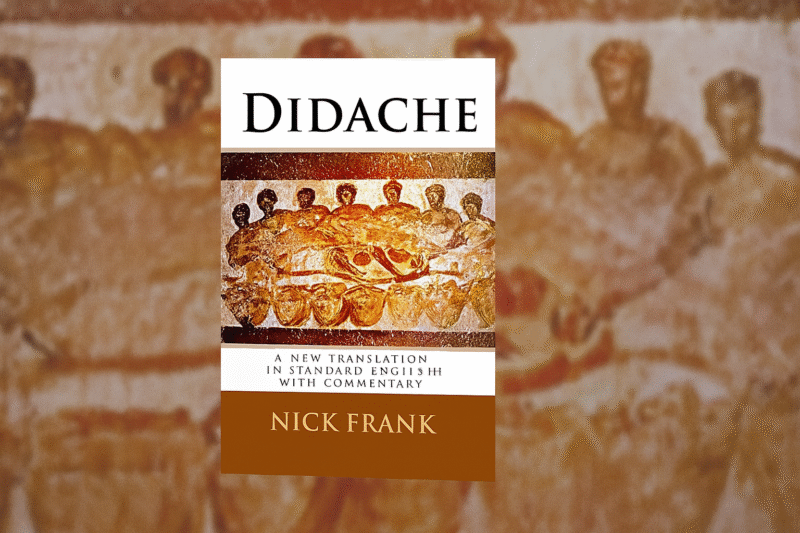
Many followers of Jesus would admit that they have struggled throughout their years of following Him to maintain a consistent prayer life. In The Prayer of Jesus by Ken Hemphill, Ken admits his own struggle in this area. Hemphill states, “I could never seem to find that something that enabled me to find my way through the fog of an ineffective prayer life, to know that I was honestly communicating with my Creator and Father in a way that was pleasing to Him” (Hemphill 2002, 8).
Though we try many habits, strategies, and trends when it comes to prayer, Hemphill reminds us—through his own story and experience—that it’s not until we wrestle with Jesus’ approach to prayer, more than our prayer lists, that we discover confidence and consistency in our prayer life—and effectiveness.
A Look at The Prayer of Jesus by Ken Hemphill
This book, released by LifeWay Press in 2002, emerged out of the way Hemphill “witnessed God doing incredible things in [his] heart and in [his] world” through a deeper understanding and practice of the Lord’s Prayer (Hemphill 2002, 8). It is part of a six-week study designed for groups and includes a video component, though I just read the book for its standalone value.
The goal of this book is to draw us closer to Jesus through prayer—to transform our prayer experiences “from ritual into raw, living, breathing power” (Hemphill 2002, 9). For Hemphill, this prayer has become the start of his day—a way of hiding this prayer and its truth in his heart and mind from the outset. In some way, it has helped him pray without ceasing. It has “enabled [him] to carry on a daylong dialogue with [his] Father,” a practice he claims has radically changed his life—and he desires the same for his readers.
At the core of the Lord’s Prayer, we see that prayer is not about getting our requests granted or alerting God to our needs. Rather, it is about learning to “spend time in conversation with our Father” (Hemphill 2002, 17). Through Hemphill’s experience practicing this prayer in the morning and throughout the day, he has learned that this is a prayer that leads to reward and effectiveness in intimacy with God’s Spirit and in experiencing the Kingdom of God breaking into the world around us.
Counteracting Ineffective Prayer
Hemphill quotes from a recent national survey that was“conducted by a mainline Christian denomination,” in which the results indicated that 25 percent of its members admit that they never pray…Think of the ridiculous analogies: A football team that never practices. An orchestra that never tunes its instruments. A farmer who never plants any crops…”(Hemphill 2002, 20). This is why understanding the Lord’s Prayer is important. In this prayer, “Jesus has given our checklist. No matter how many hours we’ve racked up behind the prayer wheel, we never outgrow our need to follow His commands;” we must pray like this (Hemphill 2002, 29).
This book, or workbook resource, begins by calling readers to pray the Lord’s Prayer. From there, it moves into an introduction that explores how this prayer might be the very answer we’ve been seeking for a more effective prayer life. It also highlights how life becomes more meaningful in light of this prayer, carrying the promise of living in the reality of the Lord’s Prayer.
The Framework of The Prayer of Jesus by Ken Hemphill
After the introduction, the book is organized into five distinct weeks. Week 1 focuses on “praying till you’re blue in the face,” exploring three common reasons prayer often seems ineffective and how the Lord’s Prayer helps us avoid those pitfalls. Week 2 covers “God and the family tree,” offering three practical realities we draw from Jesus’ prayer. Week 3 is titled “Anytime, Anywhere” and explores three responsibilities found in the Lord’s Prayer. Week 4 dives into three specific requests presented in the prayer, and Week 5 highlights three reminders about God’s power.
Following these five weeks are additional sections, including “How to Become a Christian,” a leader guide, and a “Christian Growth Study Plan.” As mentioned before, a video accompanies each chapter or section—from the introduction through the five weeks. I did not watch the videos or have access to them, so I cannot speak to their quality. However, each chapter provides a helpful introduction to prayer and the themes found in the Lord’s Prayer. It addresses common challenges in prayer, introduces relevant stories and Scripture, and invites both individual and group reflection through thoughtfully crafted questions.
Each session includes follow-up homework, Scriptures to look up, prayers to pray, and questions to reflect on. There are also viewer guides with underlined blanks to fill in while watching the videos, along with space for journaling throughout the study.
About Dr. Ken Hemphill
At the time this resource was developed, Dr. Ken Hemphill was serving as President and Professor of Evangelism and Church Growth at Southwestern Baptist Theological Seminary in Fort Worth, Texas—a role he began in 1994 and continued through the publication of this book in 2002, stepping down in 2003. Following his presidency, Hemphill was later appointed as the Distinguished Fellow of the Hemphill Center for Church Revitalization and Senior Professor of Church Revitalization in the Roy J. Fish School of Evangelism and Missions, a role he held as of 2022.
Hemphill is a well-known voice within many Baptist circles. After graduating from Wake Forest University and the Southern Baptist Theological Seminary, he went on to earn a doctoral degree from Cambridge University. He has since authored numerous books and served in various localized pastoral roles over the years.
This workbook was developed in collaboration with Dr. Drayl Eldridge, then Dean of the School of Educational Ministries at Southwestern Baptist Theological Seminary. Together, they created a practical and comprehensive resource designed to guide individuals and groups in deepening their understanding and experience of prayer.
A Prayer That Fixes Our Lives and Theology
This is a prayer that not only fixes our lives, but it is a prayer that repairs our wayward theology. From the start we wrestle theologically with the fact that “To address Him as Father not only reminds us that we are welcome at His side but that we are also willing to receive His correction as one of the gifts fathers give to their kids”—an act we are opening ourselves up to in this prayer (Hemphill 2002, 43). We are also reminded in this prayer that “Prayer must be God-centered and kingdom-focused. In order to approach God properly, we must be constantly looking at Him and not at our needs,” an important theological realignment (Hemphill 2002, 46). In this prayer, we are also learning to focus on the Kingdom, God’s rule and reign.
Hemphill remarks on some ways in which the prayer fixed his theology, he states,
“For years I prayed the Lord’s Prayer in a mechanical fashion, paying little attention to what I was actually saying.
- I would pray, “Hallowed be Your name,” as if I were giving God my permission for His name to be declared holy.
- I would pray, “Your kingdom come,” as if I were giving God my OK for Him to perform His sovereign work.
- I would pray, “Your will be done,” as if His will were some generic concept totally disconnected from my own life.
Suddenly, it dawned on me how naïve and foolish my praying had been.
- God’s name is holy because God, by nature, is holy.
- God’s kingdom will come whether I advance it or not.
- God can accomplish His will with me or without me.” (Hemphill 2002, 50).
This Prayer Can Be Mishandled
The Lord’s Prayer can be prayed incorrectly, as all prayer can be. Anything good can be done wrongly. Hemphill remarks on three ways in which the Lord’s Prayer is often prayed wrong. He states, “Often it’s prayed only in public (for effect),” and when we do that, it will be ineffective (Hemphill 2022, 50). Secondly, prayer, including the Lord’s Prayer, is often “prayed without thinking (vain repetition),” which turns vain results in our lives. Third and lastly, there are times the Lord’s Prayer is just read, or maybe even worse, “it’s not prayed at all (prayerlessness)” (Hemphill 2002, 27). The Lord’s Prayer, like any prayer, can be ineffective if it is mishandled. However, when prayed correctly, the prayer leads to effective results and greater intimacy. That is what is at the core of this book: it is about learning to live the Lord’s Prayer as you pray it.
Recommending This Book
Though I would have separated the book in a few different ways, dealt with a few of the petitions and lines that Hemphill doesn’t address, this resource is still a great one. I kept thinking the whole way through that this would be a good group study to do with others. Its format is similar to what I want to develop in my own curriculum. If you’re looking for a resource that is accessible, theologically rich, and practical for personal or group use, The Prayer of Jesus is worth exploring. Hemphill’s passion for helping others encounter the heart of the Father through the words of Jesus makes this a valuable tool for anyone seeking to grow in a more meaningful, Spirit-led prayer life.



